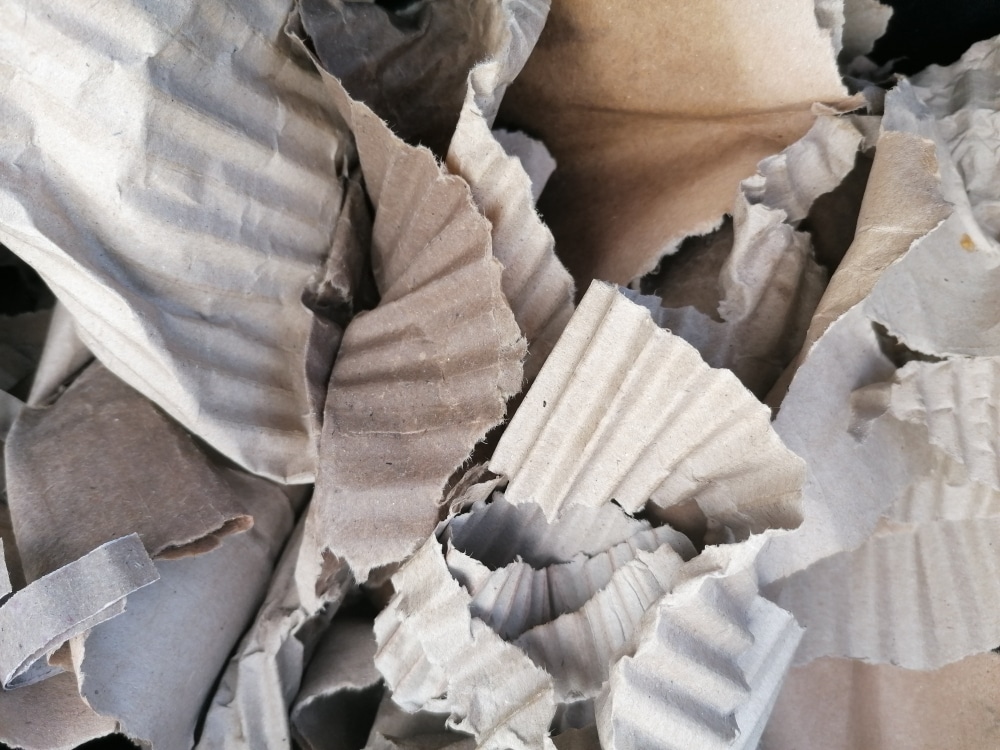You can read it in every manual for worm composting: always alternate the kitchen waste that you feed to your compost worms with a layer of cardboard, or other waste from the ‘brown’ group. Such as branches, straw, dry leaves.
Yet I notice that many people forget that adding cardboard at some point. And that’s a shame. Not only because worms feel wonderfully at home between the ridges, but also because you can prevent many problems with enough cardboard.
Why do you need to add cardboard? And which cardboard should you use? I answer these questions and even more cardboard-related compost questions in this blog.
Why does cardboard have to be put in the worm bin?
Every worm bin needs a ‘bedding’: A carbon-rich base that provides:
1: A good C/N ratio and therefore good acidity. Cardboard consists (except for the glue) entirely of wood fibers.
2: Moisture regulation Cardboard is an excellent moisture absorber.
3: airiness, supply of oxygen. Corrugated cardboard in particular provides a supply of oxygen in your worm bin through the fine channels. Loose twigs or leaves also provide structure and provide air supply.
Which cardboard should you put in your worm bin
From the answer to the previous question you can already see that corrugated cardboard / corrugated cardboard is preferable to solid board. Solid cardboard (you know, from rice packaging, for example) is water resistant, so absorbs poorly. And you miss the advantage of the air ducts. Especially if this solid cardboard is also printed and coated, it does not have to look for in the worm bin.
How much cardboard should I add?
On average, almost half of your waste should consist of the ‘brown’ component. So cardboard, straw, twigs, dry leaves. In practice, it is difficult to really add 50% cardboard, but do not be too economical with it. Especially in the plastic bins, which are more likely to become a bit too moist than the wooden bins, it is important to add enough cardboard (or other brown material).
What can I use as bedding if I don’t have cardboard?
Instead of cardboard you can also choose: Paper chips (preferably not bleached paper), dry leaves, straw, cocopeat, straw.
Use your common sense: a whole layer of sawdust or a pack of paper will not let much air through. Make you cram the paper or pass it through the paper shredder.
Can the cardboard or paper be printed?
I read conflicting articles about this. From the printing industry it is said that nowadays no heavy metals or toxic substances are used in paper printing. Various worm gurus swear by only black printed paper. So I myself use printed cardboard boxes, which are often only very lightly printed. And when I use newspaper cds, I leave out the colored pages. I also leave high-glossies to the paper bin, if only because they absorb moisture less well.
Do the compost worms eat the cardboard?
The moist cardboard, infused with waste juices, is an ideal adhesion medium for all kinds of micro-organisms. Worms do not eat the cardboard or the kitchen waste, but hunt for the microorganisms, which in turn feed on the waste and moisture from the waste that pulls into the cardboard. And in that process, of course, they also scared in the waste and cardboard broken down by the micro-organizing.
How small should I make the cardboard before I put it in the worm bin?
Large slabs of cardboard can block the air supply. So just like the waste, it is best to make the cardboard small. The smaller the better. 5 by 5 cm is ideal. But I have to admit that I’m a bit lazy about this myself. It helps if you have a container with torn cardboard next to your worm bin.
If you have small children around you, save cardboard for a few weeks and organize a tear competition. Or do it yourself if you want to de-stress.
Do I need to wet the cardboard before feeding it to my compost worms?
Cardboard should only be wet in the beginning if you just put the worms in the worm bin. Because then there is no moisture that is released from the waste. Over time, you can just put a layer of dry cardboard on top every time. This will get wet on its own.
If it gets very hot, you can put a good layer of wet cardboard on top. This ensures cooling. You then leave the lid behind, so that the moisture can evaporate and it will not scald in your container.
What happens if I use too little bedding in my worm bin?
With too little cardboard, the contents of your worm bin can become too acidic, too wet, or anaerobic. All things that scare the worms away with.
A good layer of cardboard on top also helps against all kinds of insects such as fruit flies and mosquitoes. It forms an extra barrier, and these critters like a very wet environment.

